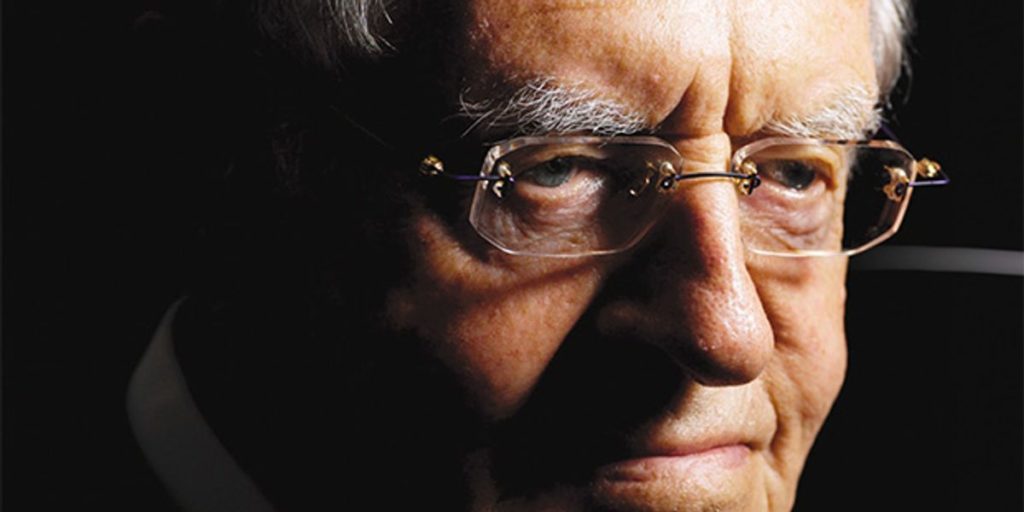During the 1920s, he built crystal radio sets to listen to classical music on the radio waves then beginning to fill the ether. Of Belgian extraction, he was raised in Aachen, Germany, in a family immersed in music. At the heart of each of his radios was a tiny chip of semiconductor material, such as galena (lead sulfide) or silicon, with a fragile wire jabbed gingerly into its surface. For reasons nobody fully understood until the late 1930s, this detector rectified the alternating-current signal from the antenna into the direct-current signal needed to drive headphones.
Similar point-contact devices, especially those made with silicon, could be used as the rectifier required in the superheterodyne mixer circuit of a radar receiver, which shifts the received frequencies down by mixing the input signal with the output of an internal oscillator. Because the electrical action of such a crystal rectifier is confined to a very small, almost microscopic region on the semiconductor surface, the device can rectify currents at relatively high frequencies.
Theoretical work by Walther Schottky at Siemens AG, in Munich, Germany, and by Nevill F. Mott at the University of Bristol, in England, had given Mataré and other radar researchers a much better understanding of what was happening beneath the sharp metal point. When the point touched the semiconductor surface, excess electrons quickly flowed into it, leaving behind a neutral “barrier layer” less than a micrometer deep in the material just underneath it. This narrow zone then acted like an asymmetric barrier to the further flow of electrons. They could jump the barrier much more readily from the semiconductor surface to the metal point than vice versa, in effect restricting current flow to one direction.
As the war ground on, the leaders of the Berlin-based German radar establishment urged the Luftwaffe to pursue research on systems operating at wavelengths well below 50 centimeters—in what we now call the microwave range. They argued that such systems would be small enough to mount in warplanes and detect approaching enemy aircraft through dense clouds and fog.
But German military leaders, basking smugly in their early victories, ignored those pleas. Luftwaffe chief Hermann Göring, who had served as an open-cockpit fighter pilot in World War I, adamantly believed that the intrinsic fighting abilities of his Aryan warriors made electronic systems superfluous. “My pilots,” he bragged, “do not need a cinema on board!”
Everything changed after February 1943, however, when a British Sterling bomber downed over Rotterdam in the Netherlands revealed how far behind the Allies Germany had fallen in radar technology. Göring ordered a thorough analysis of the bomber’s 9-cm radar system and recalled more than a thousand scientists, engineers, and technicians from the front in a desperate attempt to catch up. By summer they had built a working prototype, but it was much too late. Allied bombers, aided by onboard radar systems that allowed pilots to operate even in foul weather, were pulverizing German cities with increasing impunity.
Mataré recalled the sudden urgency in an interview. He intensified his previous R&D efforts on crystal rectifiers, particularly those made of silicon, which seemed best suited for microwave reception. But the Allied bombing of Berlin was making life exceedingly difficult for Telefunken researchers. “I spent many hours in subway stations during bomb attacks,” he wrote in an unpublished memoir. So in January 1944, the company shifted much of its radar research to Breslau in Silesia (now Wroclaw, Poland). Mataré worked in an old convent in nearby Leubus.
Laboring full-time to get silicon rectifiers into production, Mataré had scant opportunity to work on reducing the oscillator noise in radar receivers—an outgrowth of his doctoral dissertation. But he did manage to build and study an intriguing new device, the crystal “duodiode,” in which two closely spaced metal points contact the semiconductor surface, forming two adjacent crystal rectifiers. If they possess the same resistance and capacitance, these two rectifiers can be used in a special circuit to cancel out noise from the oscillator of a superheterodyne mixer. The noise through one rectifier adds to the overall signal transmitted by the mixer, and the noise through the other rectifier subtracts from that signal. But to ensure identical electrical characteristics, the points must be extremely close—far less than a millimeter apart—so that both contact the same tiny crystal grain on the surface of the semiconductor.
Mataré worked with silicon samples provided by physicist Karl Seiler in Breslau and germanium samples from a Luftwaffe research team near Munich that included Welker, his future co-worker. Although silicon worked better for radar receivers because it rectified at higher frequencies, germanium duodiodes exhibited intriguing behavior. When the two points touched the surface less than 100 micrometers apart, Mataré claims, he occasionally noticed that by varying the voltage on one he could influence the current through the other—a phenomenon he dubbed “interference.” It seemed as if one of his points could affect a region extending far beyond the narrow barrier layer predicted by Schottky’s theory.
Mataré had stumbled upon a method to influence this layer, which had stubbornly blocked earlier attempts to make a solid-state amplifier. But wartime urgencies kept him from pursuing this intriguing possibility much further.
Germany’s eastern front collapsed in January 1945, and the Russian Army was swiftly approaching Breslau. The Telefunken lab in Leubus was hastily abandoned, and all of Mataré’s lab books and records were burned to keep them out of enemy hands. The group attempted to reconstitute its R&D program in central Germany, but the U.S. Army terminated this effort when it swept through in April 1945, mercifully sending Mataré home to rejoin his family in nearby Kassel.


